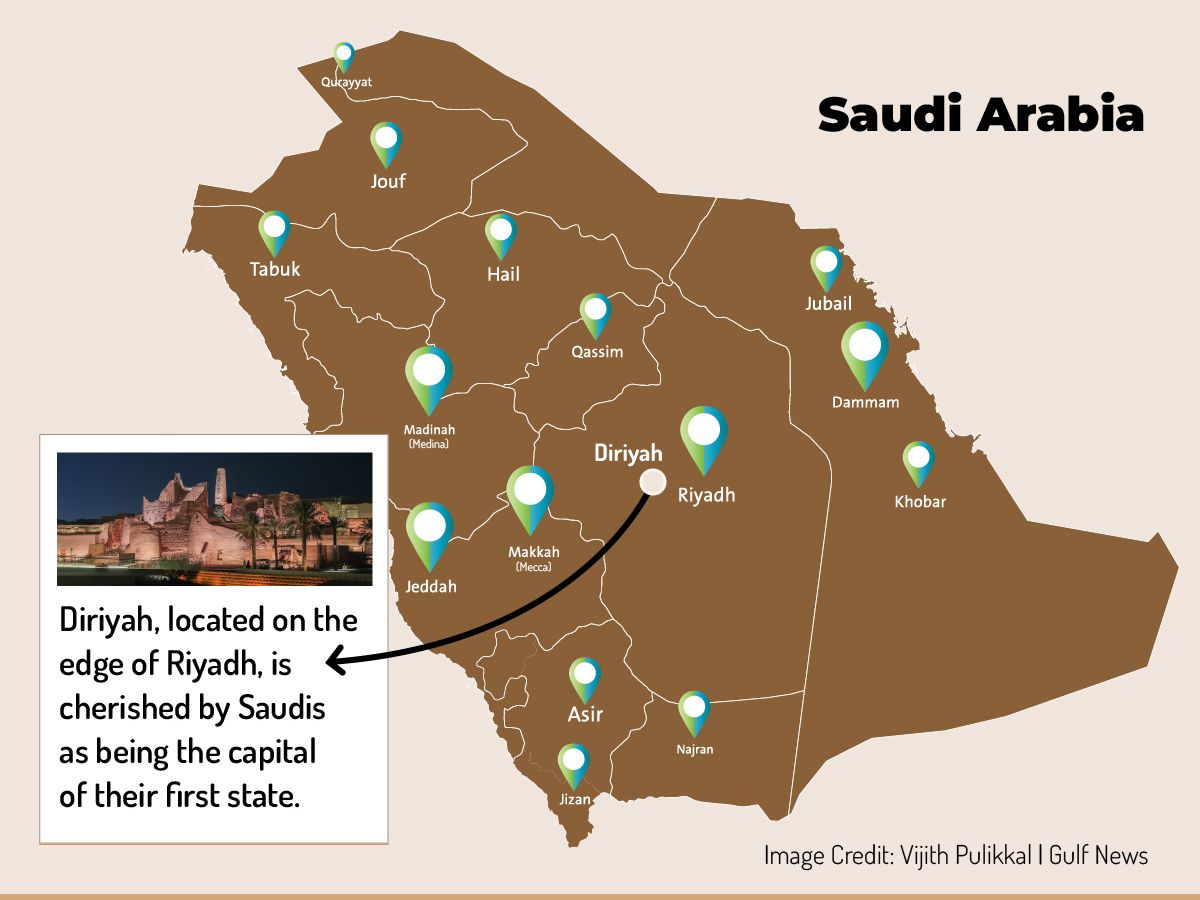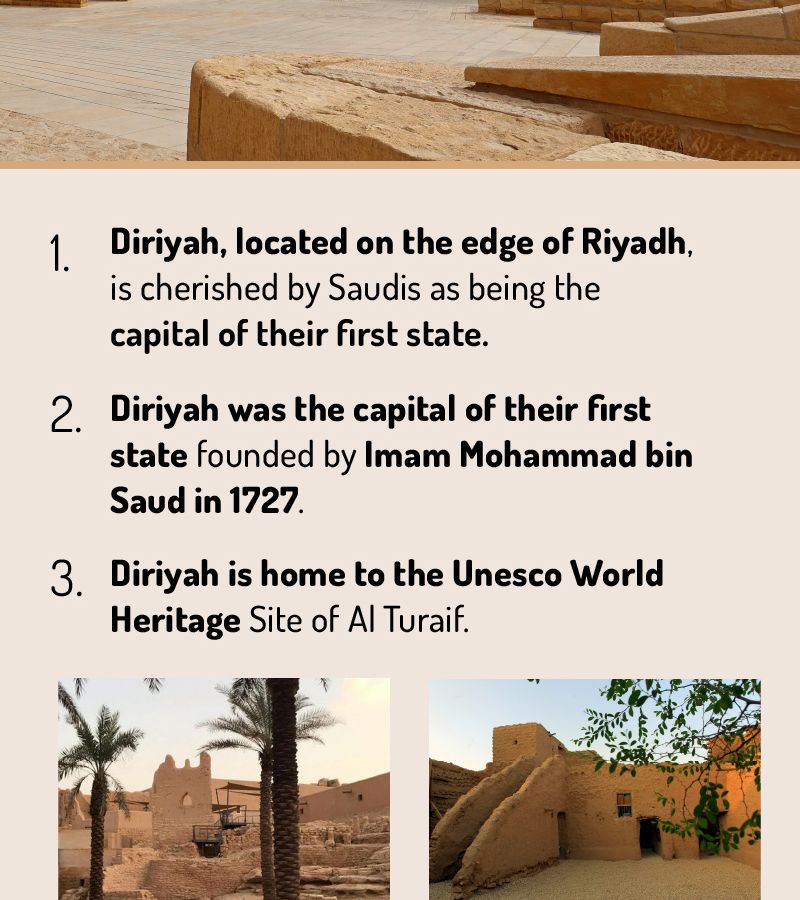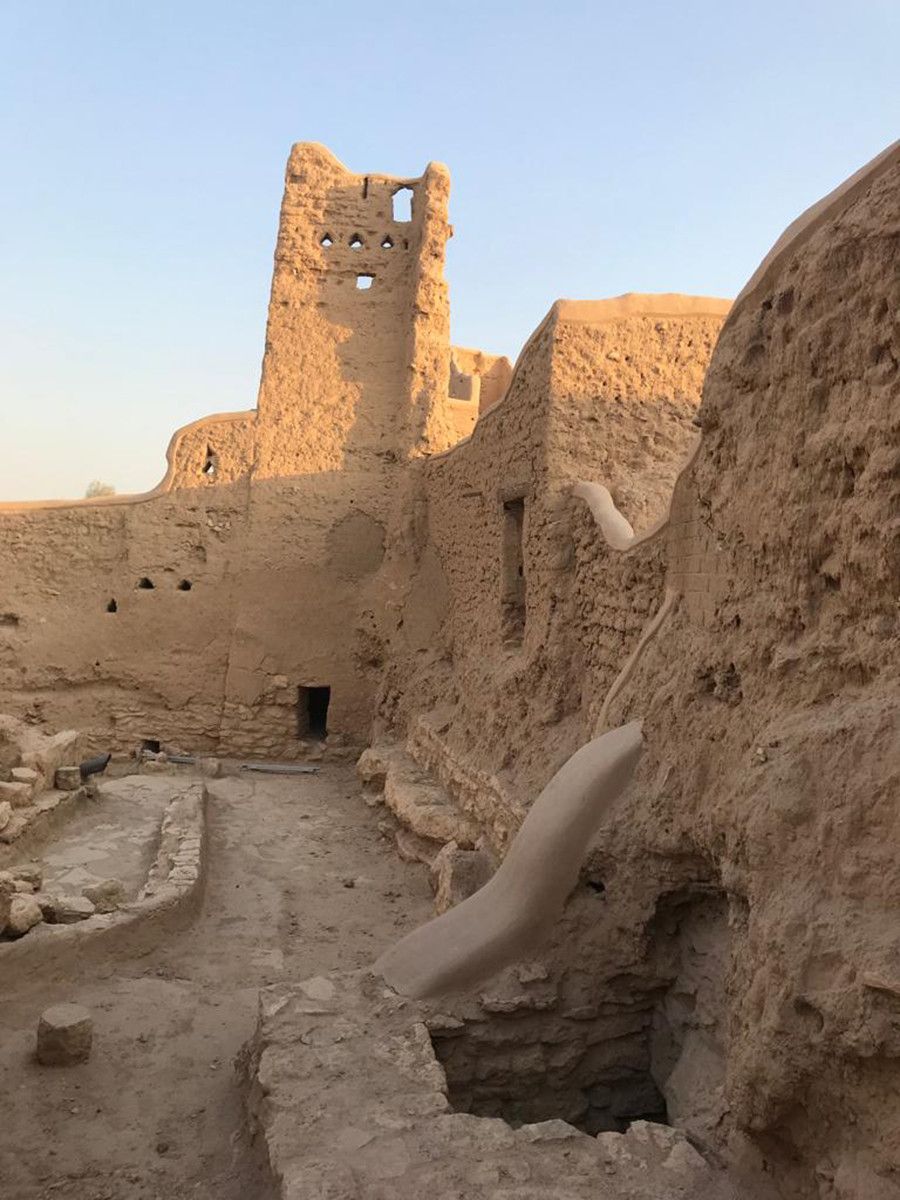Saudi Arabia’s Diriyah: From a Historic Town to Kingdom’s Crown Jewel

Famed for its centuries-old heritage and captivating architecture, the historic town of Diriyah, north west of Riyadh, sees its future in the making as Saudi Arabia eyes a prominent spot on the world’s tourism map.
With a multitude of ancient districts and monuments, the region is celebrated as a big open-air museum.
Originally established in 1446 AD on the banks of Wadi Hanifa, Diriyah is a milestone in the kingdom’s history. The town is cherished by Saudis as being the capital of their first state founded by Imam Mohammad bin Saud in 1727. It has since wielded clout and attraction. Diriyah retained prominence in the Arabian Peninsula in the 18th century as an oasis of stability and prosperity.
One of its landmarks is Al Turaif District, a Unesco World Heritage site. Al Turaif is home to Salwa Palace, a 10,000-square metre complex that served as a seat of power in the first Saudi state.

Giga-project
Diriyah is back in spotlight par excellence through an ambitious development project. The Saudi government is working to transform the town into a leading global tourist and cultural destination.
To this end, in 2017 a royal decree was issued creating the Diriyah Gate Development Authority (DGDA), an agency responsible for restoring the heritage town and regaining its glory.
At a ground-breaking ceremony In November 2019, Saudi King Salman bin Abdul Aziz laid the foundation for the Diriyah Gate, a project aimed to put the iconic town with its authentic culture under the world spotlight.
Stretching over a 14-square-kilometres, the giga-project features, among other things, five major meeting places, namely the King Salman Square, the Samhan Amphitheatre, the Heroes Memorial Plaza, the Mosque Square, and the Historical Village.
An art district is planned to house five academies showcasing Arabic calligraphy and Islamic arts, distinct Najdi architecture as a centerpiece of the Saudi heritage, local cuisine, Arabian music and theatre. But this is not all.
The project, moreover, comprises other amenities and attractions drawing on the region’s 300-year history, and harmonising it with a modern aura.
8 museums
Renovated Diriyah will have eight museums as well as venues for conferences and exhibitions, according to Jerry Inzerillo, the CEO of the Diriyah Gate Project.
“We will have a new 15,000-seat cultural performance centre, sporting venues and all new souks. There will be a 3.5 kilometre walking path overlook the Wadi (Hanifa) and several thousand residences and offices,” he said.

When completed, the 63-billion-dollar project will see more than 20 hotels and a resort overlooking the ancient sites. Also planned are more than 100 restaurants, which with their local and international cuisine, promise guests a unique dining experience.
Diriyah Company and the Royal Commission for Riyadh City recently unveiled a joint venture to construct the Royal Diriyah Opera House, a cultural landmark set to grace the historic quarters.
The Opera House, an avant-garde cultural institution in the kingdom, will be nestled near Al Turaif.
With a sprawling footprint spanning 45,000 square metres, the opera house will take centre-stage in the second phase of the Diriyah masterplan, aligning seamlessly with the kingdom’s ambitious development scheme, dubbed Saudi Vision 2030 and boosting the stature of Diriyah as a hub of global cultural vibrancy.
Renowned for its creative and sustainable designs, Snøhetta intends to infuse traditional Najdi architecture elements into the Royal Diriyah Opera House. Kjetil Thorsen, the co-Founder of Snøhetta, underscored the significance of harmonising tradition with modern aesthetics to craft a cultural icon with a global resonance. Inspired by Najdi architecture, the design will blend heritage and innovation, enhancing Diriyah’s cultural-driven development vision.

Harmony a keyword
Developers are keen that modern constructions respect and preserve the authentic character of the region.
“Diriyah is at the forefront of change in the Kingdom, setting the benchmark in sustainable development that honours the local community and its traditions,” confirmed Inzerillo.
Saudi Arabia aims to attract 100 million tourists by the year 2030 as part of an ambitious scheme to diversify its oil-reliant economy.
Diriyah will definitely have its share of the visitors to the kingdom. Around 27 million people – 7 million foreign tourists and 20 million domestic visitors — are expected to annually flock to the town.

In recent years, Diriyah has been part of itineraries of world dignitaries visiting Saudi Arabia. They included Russian President Vladimir Putin, who accompanied by Saudi Crown Prince Mohammad bin Salman, toured Al Turaif in October 2019.
Earlier this year, Crown Prince Mohammad announced the Diriyah Project as one of the giga-projects of the Public Investment Fund, Saudi Arabia’s sovereign wealth fund. The announcement significantly reflected the prominent status commanded by Diriyah in the kingdom’s heritage and development plans.
Immense investment opportunities
The Diriyah project is expected to enable many strategic domestic sectors, create partnerships with the local private sector, and unlock many new investment opportunities throughout its development and production phases in sectors such as construction, operation and management of hotels, retail, entertainment, and cultural facilities, according to the state Saudi news agency SPA.
The project is designed to create thousands of jobs and provide a series of initiatives enriching the quality of life for residents and visitors, it said. The Diriyah Gate project is set to provide 55,000 jobs, with 15 per cent of the employees in the project being locals, SPA quoted the DGDA executive as saying.
Most facilities in the project are planned to be completed by 2030.
In December 2021, Diriyah has been chosen by the Arab League Educational, Cultural and Scientific Organization as the Capital of Arab Culture for 2030.
The choice was endorsed by Arab ministers of culture during their annual ALECSO meeting in Dubai on December 19 and 20, after the organization’s standing committee for culture approved a vote in favor of Diriyah.
The Saudi Ministry of Culture at that time said: “We’re proud to announce that Diriyah will be the 2030 Capital of Arab Culture, in recognition of its centuries-old history and eternal cultural significance — the second city in Saudi Arabia to be chosen, after Riyadh in 2000.”
With all these efforts supported by the Saudi leaders, Inzerillo is confident that Diriyah will become the largest cultural heritage site in the world.




